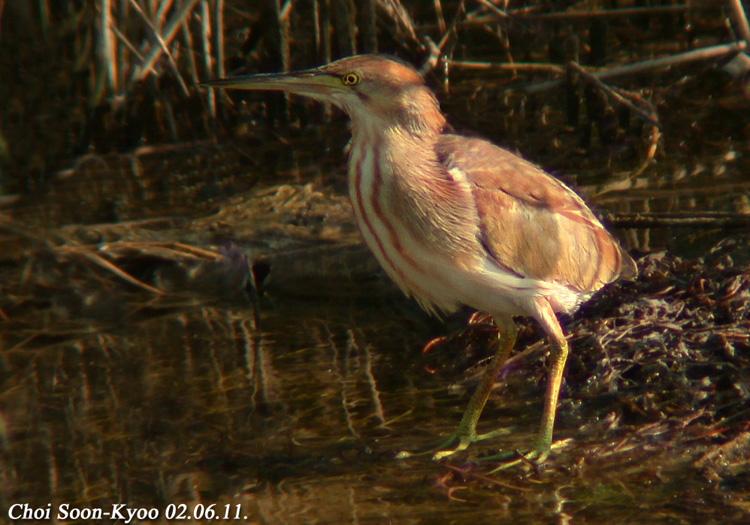|
| 질의: Little yellow | 결과: 69번째/245 | |
덤불해오라기 Ixobrychus sinensis (Chinese Little Bittern)
| 제목: | 덤불해오라기 Ixobrychus sinensis (Chinese Little Bittern)
| | 올린이: | Choi Soon-kyoo (sonarkyoo@orgio.net)
| |

| 해상도: 750x525
파일크기: 59539 Bytes
등록시간: 2005:01:16 19:34:02
|
ERROR : Server Busy(-1105)
ERROR : Server Busy(-1105)
덤불해오라기 Ixobrychus sinensis (Chinese Little Bittern)
덤불해오라기 Ixobrychus sinensis (Chinese Little Bittern)
사진: 최순규 (2002. 6. 11 강릉시 순포호), http://aves.birdinkorea.net/
덤불해오라기(Ixobrychus sinensis)는 황새목 왜가리과의 한 종으로, 한국에서는 여름철새이다. 몸 위는 황갈색으로, 몸 아래는 조금 더 옅은 색을 띤다. 수컷은 윗머리가 검은색이며, 암컷은 가슴에 줄무늬가 있다. 덤불해오라기는 보통 강변의 초원 속에 갈대·줄풀 등의 줄기를 휘어꺾어서 얕은 둥지를 만든다.
The yellow bittern or Chinese little bittern (Ixobrychus sinensis) is a small bittern. It is of Old World origins, breeding in the northern Indian Subcontinent, east to Japan and Indonesia.
|
댓글 |
|---|
| | 손님 |
|
| 덤불해오라기 Ixobrychus sinensis ( Yellow Bittern ) |
^o^
동물그림창고 똑똑전화 누리집
^o^
|
|
|